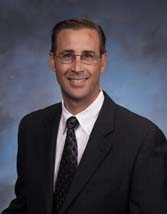Parker Aerospace is one cog in a much larger machine - parent company Parker Hannifin. The aerospace division manufactures components and develops systems across all aerospace sectors and has grown significantly in recent years, writes Helen Massy-Beresford.
Mark Czaja, Parker Aerospace vice-president technology and innovation, says the company's approach is to be both supplier and partner to the primes. Regional aircraft is an important market for the company and Parker has positions on the Russian Superjet 100 and Chinese ARJ21 programmes. "We still see growth in that sector, though we won't experience the same levels as in previous years," he says.
Parker, which climbed two places to 41 in this year's Top 100 ranking, sees the potential replacements for the Airbus A320 and Boeing 737 narrowbody airliner families as highly significant for the coming years. "That will be the most relevant change in the market because of the size of the market. It's something everyone in the industry is playing very close attention to," Czaja says.
The company is also present on many of the unmanned air vehicle programmes in development. "That sector hasn't seen the sales volume, but it could be the case in the years to come," says Czaja.
 |
|---|
| Parker is both supplier and partner to the primes, says Mark Czaja |
Increased use of composites has changed the way Parker approaches its products. "Because of the technological requirements of the parts and systems, the installation is different to aluminium and steel airframes," Czaja says. While Parker will gradually increase the use of composites in its own products, "the biggest influence will be how our products need to function in airframe systems with increased composites".
Research and development investment is key, according to Czaja. "We try to stay closely aligned with our customers at a group and at a division level. We work collaboratively to meet R&D investment needs," he says. "We get together on a quarterly basis to share information and work on technologies that benefit each of the divisions and deploy them." This involves collaboration on R&D investment at group level between the aerospace and other industry sectors of the business.
Parker Hannifin "has a long tradition of acquisition and organic growth", says Czaja. The aerospace division's 10% growth over the last two years has been divided between organic and external expansion. "We will continue to look at acquisitions. Most of the divisions have done, and will continue to do, a lot of acquisitions," he says.
"In the past years most of the focus has been on domestic acquisitions," Czaja says, but he expects the company to "really open doors for acquisitions overseas". Parker already has a presence in Brazil and sees growth potential in India and China. "We have become a global company," says Czaja.
Source: Flight International























